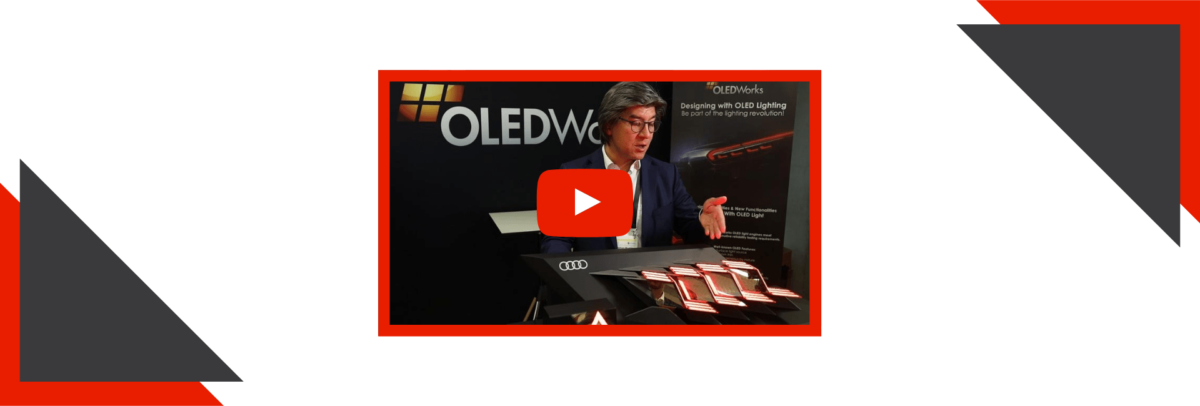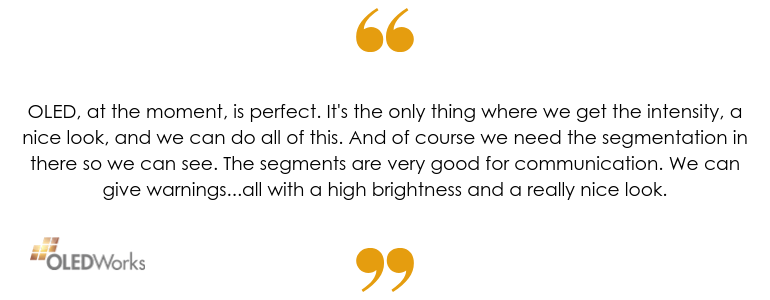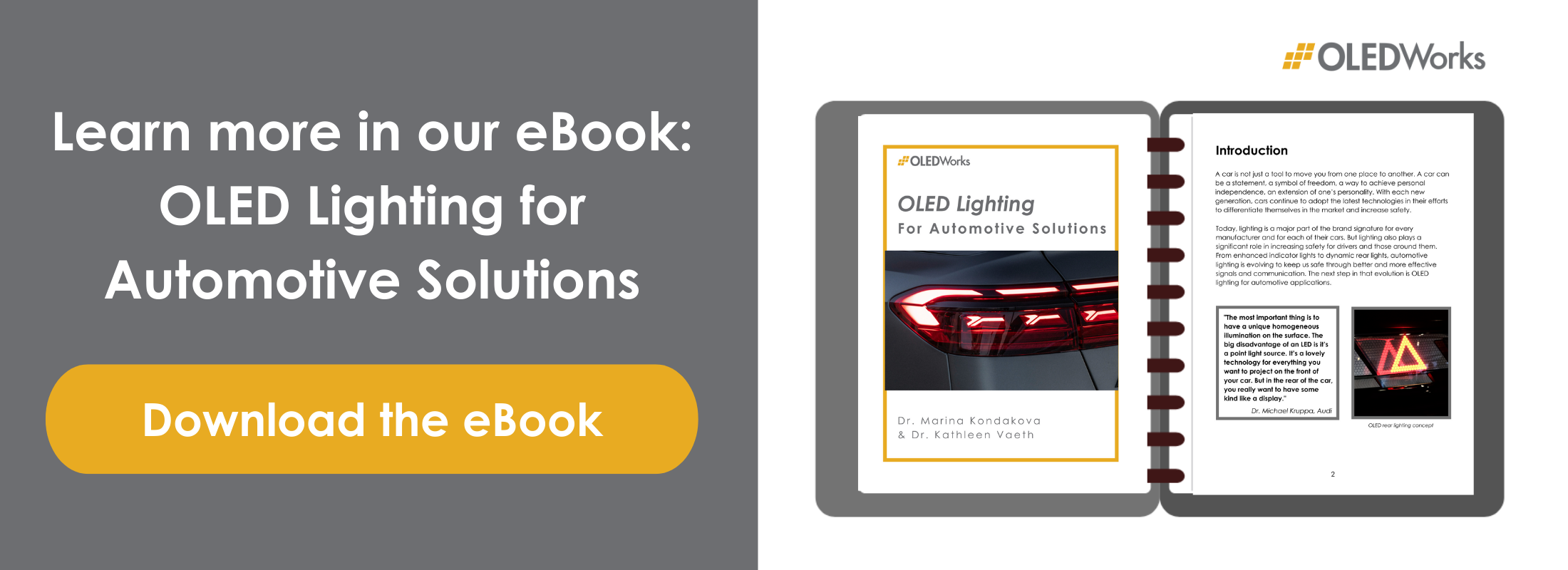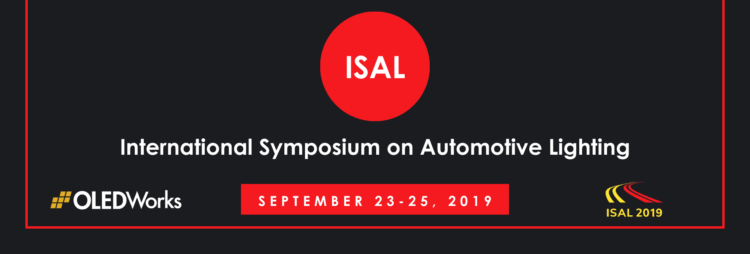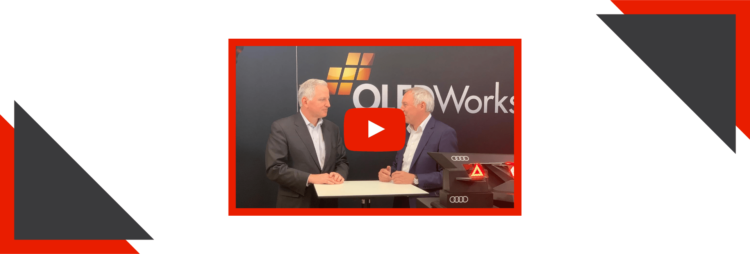![[On-Demand Webinar] Why OLED for Automotive Lighting: The OEM and Tier 1 Supplier Perspectives](https://www.oledworks.com/wp-content/uploads/2022/03/MicrosoftTeams-image-15-750x254.png)
Audi’s Stephan Berlitz, Head of Lighting Innovation, is interviewed by Audi’s Dr. Kruppa and OLEDWorks CEO David DeJoy.
Dr. Kruppa: When did we choose to take OLEDs in the automotive exterior and why?
Mr. Berlitz: Oh, that’s a long time ago. It was even much before we had the first prototypes. The idea was to understand what is possible with this OLED technology. What we knew was that we will get very homogeneous light that was very interesting for our styling, also that there was a possibility to make it really flat.
And when we started, I think you remember, this form, it was 3-dimensional, I would say the complete rear of the car. And it was one big display, and all of the functions were moving. That was actually the original vision that our styling guys had when I told them “yes, we can do something with OLEDs!” And that was actually the idea to say, “how can we get from this flat easy thing to something three-dimensional?” And that’s actually what you can see here. We have these dynamics, and all of this already, what we have here. That was one part of the vision, and the other part of the vision was of course, we wanted flexible, because for the styling guys, it’s normally totally terrible to have something flat and two-dimensional. But as you can see, even with two-dimensions, it’s possible to get something really nice and unique.
K: What is the advantage of a flex-OLED for doing something like this?
B: With flexible OLEDs, the big advantage as you can see is you can fit it a bit more to the contour and surfaces of our cars. And the big vision would be take it to the rear, glue it on there and that’s it. Maybe in a few years we get something like this and have a complete foil on the rear of the car. Maybe. It’s a big objective for the future.
David DeJoy: As you curve the thin glass, or whatever flexible substrate it’s on, what are some of the benefits you get by using OLED as you curve the device around the car, other than just the fact that it curves? Why is it important to have a thin light source that does this?
B: Actually, the intention of our rear lights is, we want not just one way directional communication, we want communication in every direction. And because it’s a surface emitter. You need them to get light in all directions which is very important. Because the communication is completely around the car. It’s on the floor. On the floor it’s not OLED, it’s a projection system, but on the car we use these surface emitters, and it’s actually the one big thing we need. So, it’s just because we have to go around the car, and you need some technologies that are able to go around the car.
D: So the communication is an incredible idea, and I think the segmentation allows you some diversity to that. What type of communication are you thinking that you want to give to the people behind you?
B: The main thing is, of course, safety information because our cars are connected. We have much more information from our navigation systems, we have information from other cars communicating via Wi-Fi, so if we know something happening in front, we can give this information to other cars that don’t have this car-to-car communication. We can give this information to them and save lots of seconds, and if you can save one second of reaction time, it’s totally great! And we could save many seconds by just giving this information to other cars behind us. And that makes life safer for our drivers, but also for the drivers behind us, so it’s safety for all. And that’s something that’s possible with communication items, and that’s why it’s something we try to push.
D: And OLED is a good technology for that because of the segmentation?
B: OLED, at the moment, is perfect. It’s the only thing where we get the intensity, we get a nice look, and we can do all of this. And of course we need the segmentation in there so we can see. The segments are very good for communication. We can give warnings, and we can give all of this with, all with a high brightness and a really nice look. And of course, nobody pays for safety. To combine this with styling is the perfect combination so we can bring this technology into the cars. Nobody would buy it, but because of the styling ideas, people will buy it.
